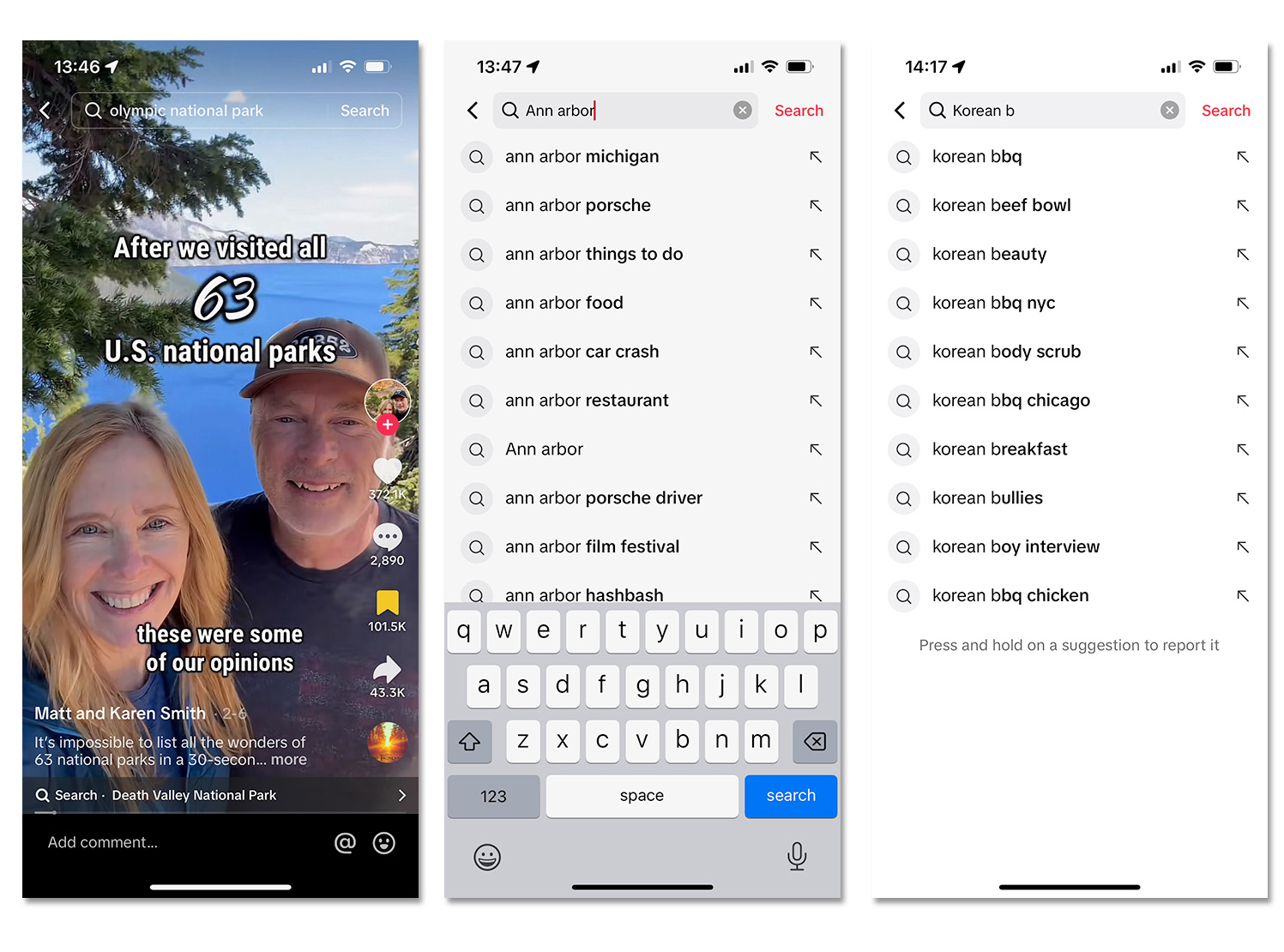The TwoSix team is back and ready to share what’s On Our Radar for April so that you can stay ahead of the always-evolving digital marketing landscape. This month the TwoSix team discusses Google and LinkedIn CTV, TikTok SEO Strategies, a new LinkedIn video feed, and much more! Keep reading to find out what we’re keeping On Our Radar for April 2024.

LinkedIn has introduced a new feature called Live Event Ads, aimed at helping businesses promote their live events on the platform more effectively. This feature enables advertisers to create ads for their live streams, targeting specific audiences based on their interests, job titles, and more. With Live Event Ads, companies can generate buzz around their events, increase attendance, and engage with their target audience in real-time. This addition aligns with LinkedIn’s efforts to enhance its platform for business networking and professional development, offering marketers another tool to connect with potential customers and drive engagement through live events.
They have also added a Connected Ad TV option, which will help target B-to-B users on video platforms using their business attributes for targeting.

Now is a great time to breathe new life into your YouTube efforts as they prepare to roll out a series of new features to help creators. Some of these have been desired for a long time!
Here’s a run down:
- Thumbnails matter. If you’re not adding thumbnails currently, you should. According to YouTube, 90% of the best-performing videos have a customized thumbnail. A new A-B testing tool further emphasizes the importance that YouTube puts on quality thumbnails to represent your videos. The new A-B testing tool will allow you to test different thumbnail creatives similar to how Meta tests various ad creatives in their ad sets.
- Don’t get carried away with AI tools to enhance your videos! While it can be tempting to leverage the myriad of different AI tools to spice things up, be warned. In an effort to combat deep fakes and misinformation, YouTube will begin to make creators disclose whether or not they are using AI. At first, this made my heart sink, but upon further research, it relates to whether or not visual aspects are dramatically enhanced or outright AI generated. Content won’t be removed for using AI enhancements, but a new warning will be displayed to users.
- While YouTube is watching for misleading AI content, they are at the same time developing some exciting new AI tools like Aloud that will allow videos to be dubbed into different languages! The possibilities are truly endless and could dramatically expand your reach among new audiences. Something to keep an eye out for.
- Additionally, new AI tools can give tips to creators for what content they should be making. These types of recommendations could help to really jumpstart your efforts by ensuring your content hits the mark. What for those recommendations in your Studio. Additionally, If you haven’t already, take a look at what InVideo.io can do!
- YouTube is also experimenting with tools like Dream Track and Dream Screen to create AI music a different video assets. The bonus of using these tools would be that they are approved and a part of the Googleverse. That could definitely help you avoid any issues in the future.
- Lastly, watch for some new insights tools! Knowing how your various audience segments engage with your content is crucial. YouTube is rolling out (in the next couple of weeks) expanded analytics for viewer engagement. Now we’ll be able to see how subscribers vs nonsubscribers interact and what content resonates with a particular demographic. Data is powerful and can help ensure your creating content that will get noticed and engaged with. That only can help your Channel’s reach.
Look for these tools to be gradually rolled out throughout the year! Which of these features are you most looking forward to playing around with?

TikTok… Is Replacing Google?
Did you know over 2 in 5 Americans use TikTok as a search engine? And 17% of Gen Zers prefer using TikTok over Google when searching. Mind-blowing. It starts to make more sense when you remember there’s a search bar at the top and bottom of every video. That’s not all, though! The platform itself actually looks for keywords in posts to figure out what it’s about, so it can then serve it to interested users. It’s time to make search engine optimization (SEO) a cornerstone of TikTok strategies.

How does TikTok operate as a search engine?
TikTok looks at the on-screen text, captions, hashtags, and automated closed captions to figure out the keywords for the video. If you’re consistent, using relevant keywords in each of these places, then your content will be more likely to show up for such searches. Just avoid spamming. Any keywords you aim for should be related to the video, the caption should still be readable sentences, and most digital marketers recommend 5 or less hashtags.
How can we use SEO strategies on TikTok?
Start conducting searches on TikTok for things that feature in your video and see what it suggests! That’s the easiest way. For example, let’s say I had a video on Tomukun Korean BBQ in Ann Arbor (one of my favorite places to eat — the spicy pork is amazing). You can start with the basics. Use “Ann Arbor” and “Korean BBQ”. Then start searching these and see what it auto-fills to gain some ideas. Make sure your content goes further on TikTok by adding SEO to your content strategy on this platform!
Want to talk more about TikTok strategies? Hit us up!

Google’s stepping up its game in the world of Connected TV advertising, teaming up with heavy hitters like Disney+ and Hulu to streamline the ad placement process. This is a shift away from the methods marketers are used to, dealing directly with streaming services or relying solely on programmatic ad engines. With Google now in the picture beyond it’s YouTube products, advertisers will (hopefully) have a smoother ride.
By partnering with Google for ad inventory, Disney is embracing a new era of digital marketing. This collaboration opens up a wider audience across top CTV platforms with less hassle. It’s all about simplifying the process and reaching the right viewers.
As streaming continues to dominate our screens, advertising is evolving alongside it. Google’s foray into streaming service CTV ads underscores the growing importance of digital, data-driven marketing. With Google taking the reins on ad placements for major CTV services, advertisers have a powerful tool to connect with audiences right in their living rooms, where they’re most engaged.

LinkedIn has now launched it’s own version of connected TV ads. As video continues to be a vital and ever more important component in the ad space, LinkedIn is helping advertisers capitalize on this trend. LinkedIn has integrated their CTV option in campaign manager, so you can easily launch a campaign across platforms like Paramount, Roku and many more. At this time, launching these TV like ads is a little limited by campaign type and provider but could be a new way to get your business spaces in front of a new audience.
LinkedIn has also partnered with NBCUniversal to launch LinkedIn Premiere, this will allow brands to target users cross NBCUniversal’s premium streaming offerings. While it won’t be as wide of range as a traditional TV campaign, it will provide a greater audience to see your video ads.
Lastly, LinkedIn is also launching Live Events, to promote upcoming LinkedIn evens in-stream. The number of users viewing events in LinkedIn went up 34% over the last year and so far, unless you are connected to or following the right people, you may not be seeing the events that resonate with you. This will allow these promotions to reach a greater audience.
As you continue to grow your video portfolios, CTV on LinkedIn may be a great option for your next meetings or sports campaign.

LinkedIn is grabbing my attention right now and should be on your radar in the upcoming months! While other social media apps have been prioritized for having significantly more users than LinkedIn, their active users have consistently gone up since 2010 and a new feature has the potential to skyrocket LinkedIn into the mainstream social media scene.
Everyone on social media knows what’s working right now- say it with me… short-form video. Finally, LinkedIn is hopping on the bandwagon and is testing a new short-form video experience with a dedicated video feed. Check out this screen-recording of what this feed could look like:
🚨NEW 🚨 LinkedIn is testing a new short-form video experience, including a dedicated video ta, similiar to TikTok, Reels, Shorts, etc.
H/T to @AustinNull for the discovery/screen recording
Details here:https://t.co/HgGSUaJYvq pic.twitter.com/nDQ8otY0iW
— Lindsey Gamble (@LindseyGamble_) March 27, 2024
This could be a huge opportunity to reach new audiences organically, especially for B2B marketing! We don’t know much yet, but keep your eye out for more updates on LinkedIn video. Be sure to subscribe to our monthly newsletter to stay in the loop on all things digital and tourism marketing.
AI Advancements in Advertising: A Double-Edged Sword

In the fast-paced realm of advertising, artificial intelligence (AI) continues to revolutionize campaigns, but recent developments have sparked both excitement and caution within the industry. From Under Armour’s AI-powered commercial to a startup firm’s deepfake influencer ads, the implications of AI activations are far-reaching and complex.
While marketers eagerly embrace AI for its potential to enhance creativity and engagement through text, image, voice, and video manipulation, some brands are exercising caution. Ad Age reported a growing trend of brands instructing agencies to refrain from using their assets to train AI, reflecting concerns about privacy and authenticity. Moreover, the rollout of advanced AI systems, like OpenAI’s Sora and synthetic voices tool, remains limited, underscoring the need for careful implementation.
Despite these challenges, AI-driven campaigns continue to make waves. Lay’s recent experiment in Brazil, using AI-generated voices to shed light on sexism in sports, exemplifies the potential of AI to spark meaningful conversations. Similarly, Silverside AI’s Hypnovels tool, which transforms novels into immersive multimedia experiences, showcases AI’s capacity to innovate storytelling and promote new literary works.
As AI continues to shape the advertising landscape, it is essential for brands and agencies to navigate its complexities responsibly. While AI offers unprecedented opportunities for creativity and audience engagement, ethical considerations and consumer trust must remain at the forefront of AI-driven initiatives. In a rapidly evolving digital era, striking the right balance between innovation and responsibility is key to harnessing the full potential of AI in advertising.
With the ever-changing digital marketing world, we are here to keep you informed of new digital trends and what we are keeping on our radar for April 2024. Have any questions? Contact us! We’re here to help.
Make sure to subscribe to our newsletter to stay in the loop on all things TwoSix Digital.







